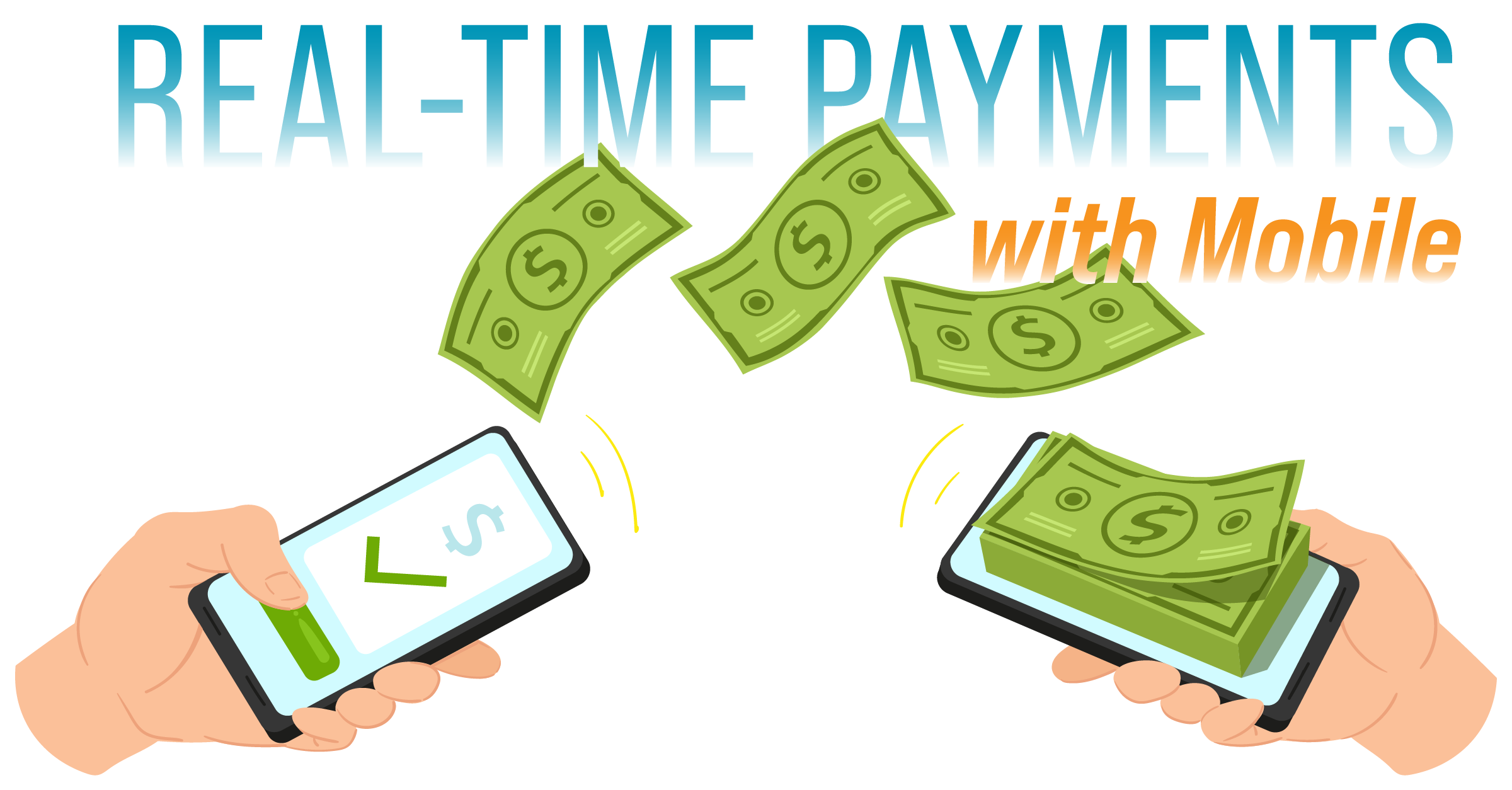Real-Time Payments with Mobile Devices
Publication Date: May 2023
Executive Summary
As mobile hardware and software continue to evolve to enable new experiences, the industry has observed advancements in real-time payments and its associated use cases. This includes person-to-person (P2P) payments, check replacement, automated invoice reconciliation, payment initiation on receipt of goods, request for payment, bill payment and emergency disbursements.
Combining real-time payments with mobile capabilities offers a number of advantages to the payments ecosystem, such as instantaneous execution and confirmation and straight-through processing, to name a few. The U.S. Payments Forum developed this white paper to educate stakeholders on the real-time payments use cases currently available to businesses and consumers. It also explores the opportunities and challenges associated with leveraging mobile devices (in this setting) and their impact on real-time payment demand and adoption.
What Are Faster Payments and What are the Benefits?
Real-time payments, or faster payments, are defined as a payment scenario where funds are immediately deducted from the payer’s account and made instantly available to the payee. These payments are irrevocable, meaning they can’t be reversed once they are complete unless a new transaction is created.
This resource highlights the following key benefits of real-time payments leveraging mobile capabilities:
- Mobile-based payments can be completed anywhere without the need for additional paperwork
- Using the “request for payment” in an instant message enables a precisely timed bill payment from anywhere
- Contextual data and straight-through processing simplify reconciliation and invoice matching
- Risk management can be improved using physical and biometric authentication, geolocation, multi-factor authentication, digital signing capabilities and workflow for multiple approvers
- Users gain stronger security as Personal Identifiable Information (PII) is not required to complete a transaction
- Mobile device cameras can be used to scan QR codes that trigger payments
- Both the payer and payee get are instantly notified when a payment takes place
Business Use Cases
Real-time payments can benefit organizations in business-to-business (B2B), business-to-consumer (B2C) and government-to-consumer (G2C) transactions. These use cases are described in detail in section 3 of the white paper.
In short, real-time payments can enable businesses in a B2B environment to eliminate legacy payment types, like checks, making it easier and faster to reconcile invoices. Additionally, real-time payments can be used to disburse funds from businesses and governments to consumers (e.g. insurance payouts or government benefits), eliminating the need to mail checks. This not only allows consumers to receive funds more efficiently, but also allows them to better track payments through real-time notifications for each transaction. It provides stronger security for consumers as the payer is able to send the disbursement to a mobile phone number which the consumer has linked to their desired account rather than providing their bank details directly.
Consumer Use Cases
Real-time payments can have a tremendous impact on the consumer experience. In addition to being able to complete a transaction anywhere, users can also benefit from security and fraud checks that ensure the validity of the transaction.
Consumers can take advantage of the below mentioned use cases:
- P2P: In this scenario, person A is able to pay person B by looking up their identifier (e.g. a handle, phone number, email address or name) to complete the transaction.
- Bill Payment: Billers can send a request for payment via push notification or SMS requesting payment for goods or services that the consumer can then click through to an app or URL to complete the transaction.
- Merchant-Presented QR Codes: In this example, a merchant displays a QR code on its point of sale (POS) device or on a sticker for the consumer to scan with their phone to initiate the payment via their mobile wallet. The merchant is then notified once the transaction is complete. This can be used for in-person and online use cases.
- Customer-Presented QR Codes: In this use case, the consumer presents a QR code on their mobile device that is then scanned by the merchant at checkout to confirm the payment type and complete the transaction. This can only be used for in-person payment
Adoption Considerations for Real-Time Payments with Mobile
While real-time payments are already playing an important role in advancing how we pay, there are a number of challenges that must be addressed to promote significant traction in the market.
Payments stakeholders should consider these potential hurdles, described at length in section 5 of the document:
- Ubiquity and reach
- Financial institution participation rates
- Alias-based directories supporting real-time payments
- Implementation standards for real-time payments via qr codes
- Risk management and security
- Liability education gaps highlighted by recent P2P fraud news
The U.S. Payment Forum’s Mobile and Touchless Payments working committee crafted this white paper with collaboration from additional Forum members. Stakeholders interested in real time payments on mobile are strongly encouraged to consult with their respective payment networks, acquirer processors, and appropriate professional and legal advisors regarding all aspects of security and implementation, prior to any implementation decisions.
To download the full white paper, please fill out the form below:
If you are a member, the white paper can be download on the members only page here: https://protected.uspaymentsforum.org/real-time-payments-on-mobile-devices/
Please note: The information and materials available on this web page (“Information”) is provided solely for convenience and does not constitute legal or technical advice. All representations or warranties, express or implied, are expressly disclaimed, including without limitation, implied warranties of merchantability or fitness for a particular purpose and all warranties regarding accuracy, completeness, adequacy, results, title and non-infringement. All Information is limited to the scenarios, stakeholders and other matters specified, and should be considered in light of applicable laws, regulations, industry rules and requirements, facts, circumstances and other relevant factors. None of the Information should be interpreted or construed to require or promote the establishment of any solution, practice, configuration, rule, requirement or specification inconsistent with applicable legal requirements, any of which requirements may change over time. The U.S. Payments Forum assumes no responsibility to support, maintain or update the Information, regardless of any such change. Use of or reliance on the Information is at the user’s sole risk, and users are strongly encouraged to consult with their respective payment networks, acquirers, processors, vendors and appropriately qualified technical and legal experts prior to all implementation decisions.

